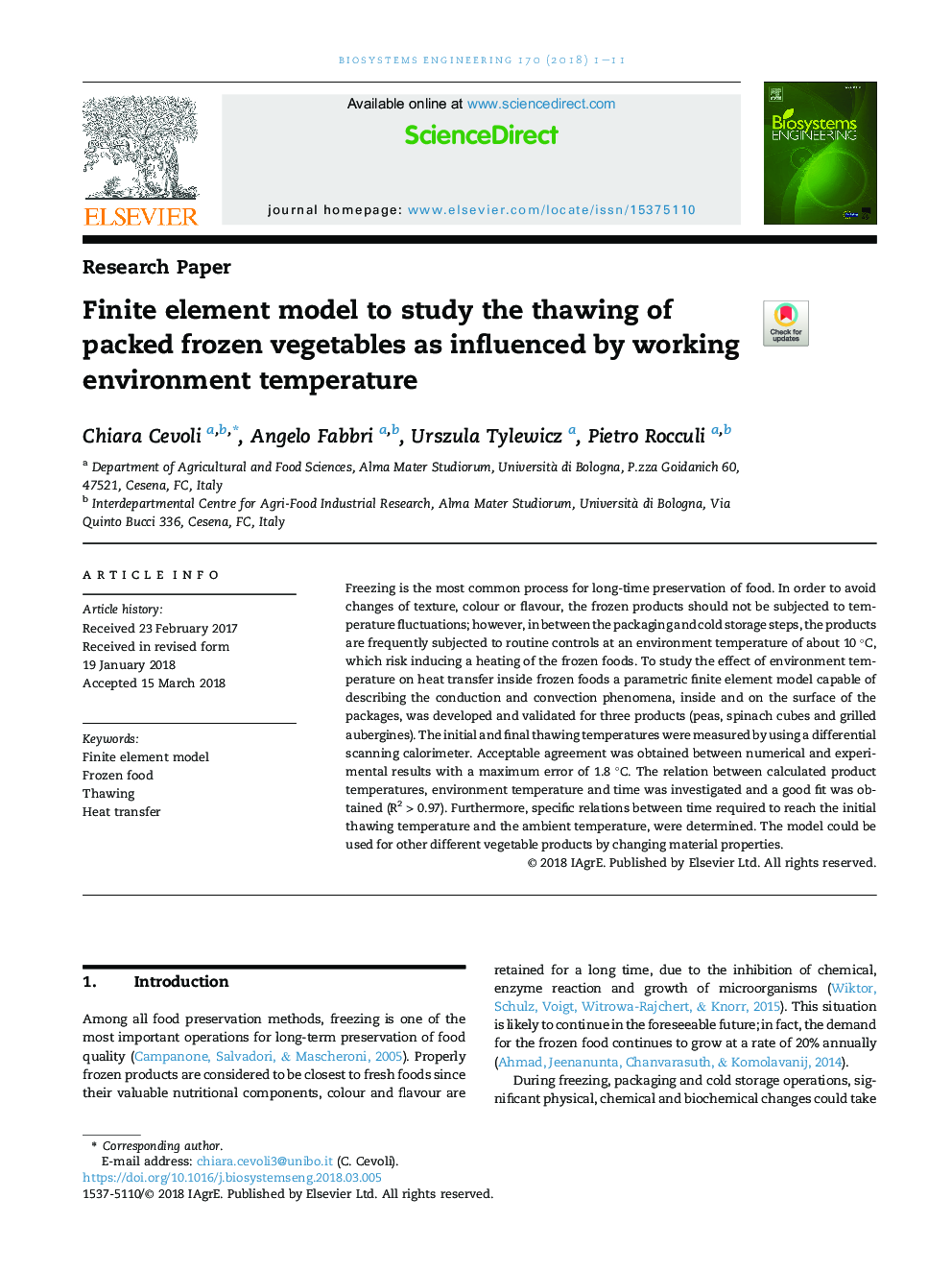| Article ID | Journal | Published Year | Pages | File Type |
|---|---|---|---|---|
| 8054695 | Biosystems Engineering | 2018 | 11 Pages |
Abstract
Freezing is the most common process for long-time preservation of food. In order to avoid changes of texture, colour or flavour, the frozen products should not be subjected to temperature fluctuations; however, in between the packaging and cold storage steps, the products are frequently subjected to routine controls at an environment temperature of about 10 °C, which risk inducing a heating of the frozen foods. To study the effect of environment temperature on heat transfer inside frozen foods a parametric finite element model capable of describing the conduction and convection phenomena, inside and on the surface of the packages, was developed and validated for three products (peas, spinach cubes and grilled aubergines). The initial and final thawing temperatures were measured by using a differential scanning calorimeter. Acceptable agreement was obtained between numerical and experimental results with a maximum error of 1.8 °C. The relation between calculated product temperatures, environment temperature and time was investigated and a good fit was obtained (R2 > 0.97). Furthermore, specific relations between time required to reach the initial thawing temperature and the ambient temperature, were determined. The model could be used for other different vegetable products by changing material properties.
Related Topics
Physical Sciences and Engineering
Engineering
Control and Systems Engineering
Authors
Chiara Cevoli, Angelo Fabbri, Urszula Tylewicz, Pietro Rocculi,
